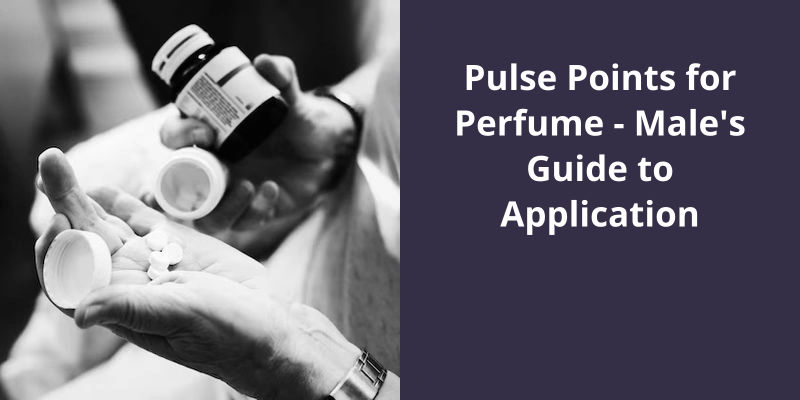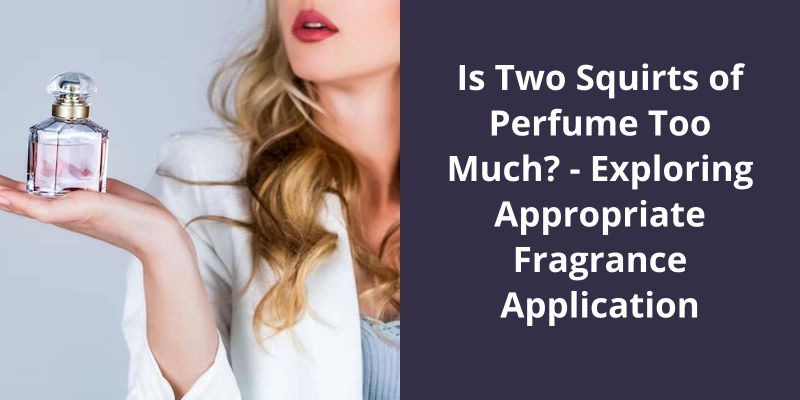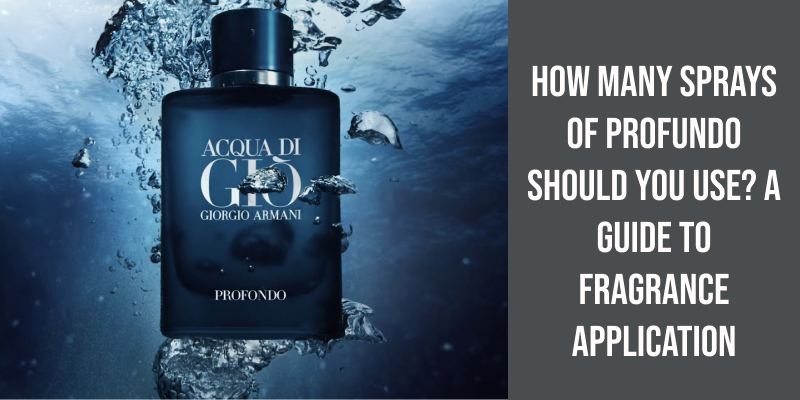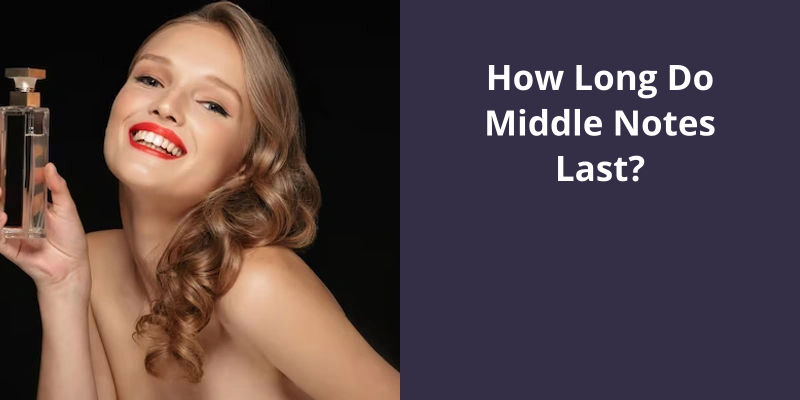Applying perfume with a stopper involves a few easy steps. First, you should open the bottle and place the stopper on your skin instead of rubbing it. By lightly pressing the stopper against your pulse points, such as your neck and wrists, you allow the scent to soak in. Then, tilt the perfume bottle so that the perfume soaks into the stopper, and gently dab the perfumed stopper onto your skin. Avoid rubbing as it can alter the scent of the perfume. Also, be mindful not to drench your skin in perfume; a few dabs are usually sufficient. Remember that applying perfume to a stopper should always be done on clean, dry skin for best results.
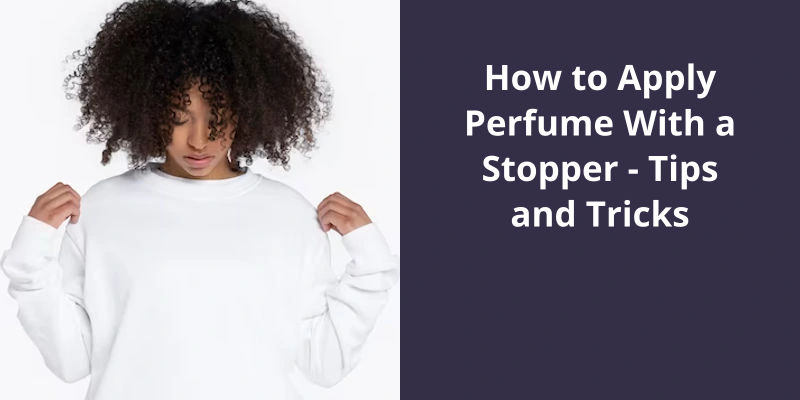
How Do You Put on Perfume That Doesn’t Have a Spray?
When it comes to perfume that doesn’t have a spray, it’s important to know the proper application method to ensure that the fragrance is evenly distributed and long-lasting. First, start with clean, dry skin. This will help the fragrance adhere better to your skin and last longer throughout the day.
Next, unscrew the cap or stopper of the perfume bottle. If the bottle has a stopper, dip the wand into the perfume and remove any excess by wiping it on the inside of the bottle. If the bottle has a cap, carefully pour a small amount onto your fingertips.
Then, gently dab or press the perfume onto your pulse points. These areas include your wrists, neck, behind the ears, and the inside of your elbows. These spots are where your skin is the warmest, which will help the fragrance develop and last throughout the day.
To maximize the intensity of the scent, you can also dab a small amount of perfume onto your clothing or hair. However, be careful not to apply too much, as this can be overwhelming and even irritate your skin.
If youre using a perfume oil, it’s best to use your fingertip to apply the fragrance directly to your pulse points. This will help to warm up the oil and allow it to spread evenly across your skin.
Overall, remember that less is more when it comes to applying perfume. A little bit goes a long way, and you don’t want to overpower those around you with an overwhelming scent. With the right application method, your non-spray perfume can last all day and make you feel confident and beautiful.
Tips for Choosing the Right Type of Non-Spray Perfume (e.g. Oil, Solid, Roll-On)
- Consider your skin type. If you’ve dry skin, oil-based perfumes may work better for you. If you’ve oily skin, a solid or roll-on perfume might be a better option.
- Think about the intensity of the scent you want. Oil-based perfumes tend to have a stronger and longer-lasting scent than solid or roll-on perfumes.
- Consider the convenience factor. Roll-on and solid perfumes are easy to carry in your purse or travel bag, while oil-based perfumes can be messy and more difficult to transport.
- Consider the ingredients. If you’ve sensitive skin, you may want to choose a fragrance that’s made with natural or hypoallergenic ingredients.
- Try before you buy. It’s always a good idea to test a fragrance before committing to a full-size bottle. Some stores offer perfume samples or you can purchase a travel-size version to try out.
Now that you know the importance of preparing your skin before applying perfume, it’s time to learn about the actual application process. Follow these simple tips to make the most out of your perfume and enjoy it’s long-lasting effect.
How Do You Use Perfume for the First Time?
One way to prep your skin is by applying an unscented body lotion. This will provide a smooth, moisturized surface for the perfume to cling to. Another trick is to apply a thin layer of Vaseline to your pulse points, such as your wrists and neck. This will create a barrier between your skin and the perfume, slowing down the evaporation process and allowing the scent to last longer.
When applying perfume, it’s important not to go overboard. A little goes a long way, and you don’t want to overwhelm those around you. Start with one or two sprays and assess how the scent wears on your skin. If the scent is too strong, you can always add more later.
Speaking of pulse points, these are the areas on your body where your blood vessels are closest to the skins surface. This means theyre warmer, which can help to diffuse the scent of your perfume. Some popular pulse points include your wrists, behind your ears, the base of your throat, and the crook of your elbows.
When applying perfume, hold the bottle a few inches away from your skin and aim for your pulse points. Avoid rubbing the perfume into your skin, as this can cause the fragrance to dissipate more quickly. Instead, let the perfume air dry.
It’s important to note that different perfumes wear differently on different people. This is because each persons skin chemistry is unique. As such, what smells amazing on one person may not work as well on another. Be patient when trying out new perfumes and give them time to settle on your skin before making a final judgment.
Finally, don’t be afraid to experiment with different scents and application methods. Perfume can be a fun way to express your personality and enhance your mood. With a little bit of practice, youll be a fragrance pro in no time!
Do You Spray on Perfume?
Perfume has been a part of human history and culture for thousands of years. It was believed to have aromatherapeutic properties and was used for religious and spiritual purposes. Today, it’s become an essential part of our daily grooming routine and helps us express our individuality and personality.
When it comes to perfume, less is always better. Spraying too much perfume can be overwhelming for both you and those around you. That’s why it’s important to know how to wear perfume correctly. Instead of spraying it all over, apply it to your pulse points, which include your wrists, behind your ears, and the base of your throat. These areas produce heat and help release the fragrance throughout the day.
Applying perfume to your skin is also a personal preference. Some people like to spray it directly onto their skin while others prefer to spray it onto their clothes. However, it’s important to remember that perfumes contain alcohol, which can stain or damage certain fabrics. It’s always safer to apply it to your skin and let it dry before getting dressed.
The “spritz and step” method is a great technique for wearing perfume. It ensures that you don’t use too much perfume and lets the fragrance spread evenly throughout your body. To do this method, simply spray your perfume in front of you and then walk into the mist. This way, the fragrance gets dispersed evenly throughout your body, and you don’t end up wasting any perfume.
Finally, it’s important to choose a perfume that suits your personality and lifestyle. Different perfumes have different notes and fragrances, and it’s essential to choose a perfume that not only smells good but also complements your natural scent. Experiment with different fragrances and find the one that works best for you.
Wearing perfume correctly and in moderation can enhance your natural scent and make you feel confident and beautiful.
The History and Evolution of Perfume in Different Cultures.
- Ancient Egyptians were the first to use perfume as part of their religious ceremonies
- The ancient Greeks also used perfume, believing it had medicinal properties
- In the middle ages, perfume was used to mask unpleasant smells in Europe
- During the Renaissance, perfume became a symbol of status and luxury
- Perfume making became a major industry in France in the 18th century
- Today, perfume is a multibillion dollar industry with a wide variety of fragrances
Applying perfume can be a tricky business, especially when dealing with fragrances that don’t come in a spray bottle. Men, in particular, may resort to splashing cologne on their bodies, which often leads to over-application. However, there’s an easy and effective way to apply perfume that doesn’t spray, which involves tipping the bottle upside down and dabbing the scent on your skin. Let’s dive deeper into the details of this application method.
How Do You Apply Perfume That Doesn’t Spray?
Another option is to use a perfume dropper. This is a great way to apply the exact amount of fragrance you desire. Simply place the dropper into the bottle, draw up the desired amount of perfume, and then apply directly to your skin. This ensures that you’re using the right amount of fragrance and that you’re applying it exactly where you want it.
These are small sticks with a cotton tip that can be dipped into the perfume and then applied directly to the skin. The cotton tip allows for a precise application and can distribute the fragrance evenly onto the skin. It’s important to use a clean applicator each time you apply perfume to prevent contamination and preserve the fragrances quality.
Some people prefer to apply perfume onto their clothes rather than their skin. This is a practical option in situations where a person may be sensitive to certain fragrances or have sensitive skin. However, it’s important to note that applying perfume onto clothing can cause stains and damage fabric over time. It’s best to test a small area of fabric first to ensure that the fragrance won’t cause any damage before applying onto a larger area.
When applying perfume, it’s important to choose the right body parts to apply the fragrance. Pulse points are areas on the body where the veins are close to the skins surface and create warmth, like the wrists, neck, and inner elbows. Applying perfume to these areas enhances the scent and allows it to be released throughout the day. It’s also important to avoid rubbing the perfume into the skin, as this can alter the fragrances scent due to the heat and friction created.
Overall, applying perfume that doesn’t spray requires some extra steps but can be a rewarding experience. Taking the time to choose the right application method and body parts, while also being mindful of how much and where to apply, can enhance the fragrances scent and longevity on the skin. It’s important to experiment and find what works best for you and your chosen fragrance. With a little practice and patience, you can apply your favorite perfume like a pro.
While spritzing perfume into the air and walking through it may seem like a convenient way to apply fragrance, it can actually lead to some unintended consequences. According to fragrance expert Sue Phillips, this method can result in staining from the residue that falls onto surfaces and clothing. So, how can you avoid this mist-and-walk approach? Here are some expert tips to help you get the most out of your favorite scents without any unwanted side effects.
Do You Spray Perfume in the Air and Walk Through It?
Many people have been accustomed to spritzing perfume into the air and walking through it, thinking that it’s the best way to apply fragrance on their skin. However, according to experts, this method can be wasteful and can even damage your clothes and furniture. Instead, they recommend spraying perfume directly onto your skin or behind your ears, where it will release the scent slowly throughout the day.
One reason why mist-and-walk might not be the best approach is that it wastes a lot of perfume. When you spray fragrance into the air, much of it doesn’t end up on your skin but instead drifts off into the atmosphere. This means that you may be using more perfume than you actually need, leading to waste and unnecessary expense.
In addition to wasting perfume, mist-and-walk can also cause damage to your clothes and furniture. As fragrance particles settle on surfaces, they can create residue that can be difficult to remove. This can cause staining or discoloration, especially on delicate fabrics or furniture materials. So, if you want to avoid these issues, it’s better to apply perfume directly onto your skin and let it dry before getting dressed.
This will help you use less perfume and avoid any damage to your surroundings, while still enjoying the benefits of your favorite scent.
Looking to transfer your perfume into a new container? Fear not, the process can be done easily with the use of a funnel or syringe, ultimately avoiding any messy spills or wasted product. Read on to learn more about the best technique for transferring your favorite fragrance.
Can You Transfer Perfume Into Bottle?
Before transferring your perfume, ensure that your desired bottle is clean and dry. Any residue or moisture left in the bottle could affect the scent or longevity of your perfume. It’s also important to note that different materials can interact with perfume, so choose your new bottle wisely. Glass or metal are typically safe options, while plastic or wood could potentially alter the scent.
Then, place the funnel securely into the opening of the new bottle. Slowly pour the perfume into the funnel, taking care to avoid spilling or splashing.
Once the perfume has been transferred, replace the cap or spray nozzle on the new bottle and store it in a cool, dry place away from direct sunlight. Be sure to label the new bottle with the name of the perfume and the date it was transferred. This can help you keep track of how long the perfume has been stored and when it may need to be replaced.
If you’re transferring a large quantity of perfume, it may be easier to divide it into smaller batches to avoid wasting any product. You can also use a pipette or dropper to transfer small amounts of perfume. Whatever method you choose, take your time and be patient to avoid making a mess or spilling any precious perfume.
How to Properly Store Perfume to Maintain It’s Fragrance and Longevity.
One way to correctly store perfume for preserving it’s scent and lifespan is to keep it in a cool, dark, and dry place away from sunlight and humidity. It’s also suggested to keep the perfume in it’s original packaging and avoid exposing it to air or extreme temperature. Storing them in a refrigerator can also be beneficial.
Conclusion
By following the right steps, you can prolong the scent's longevity and create a pleasant aroma that lasts throughout the day. Remember to take care when opening the bottle, apply the fragrance to your pulse points, and reseal the bottle tightly after use. Additionally, experiment with different scents and combinations until you find the perfect match for your style and personality.


